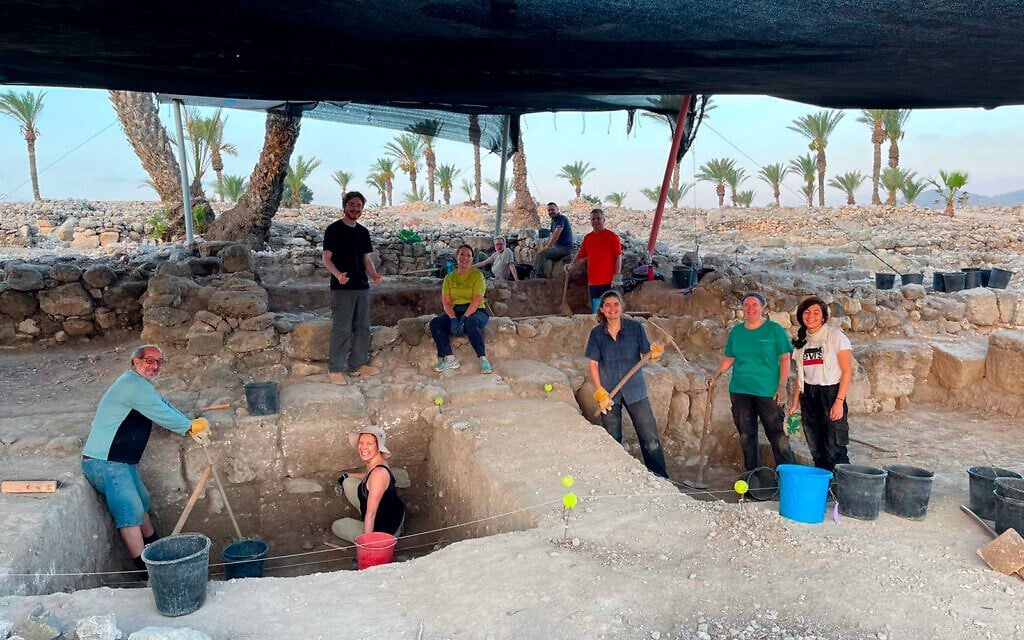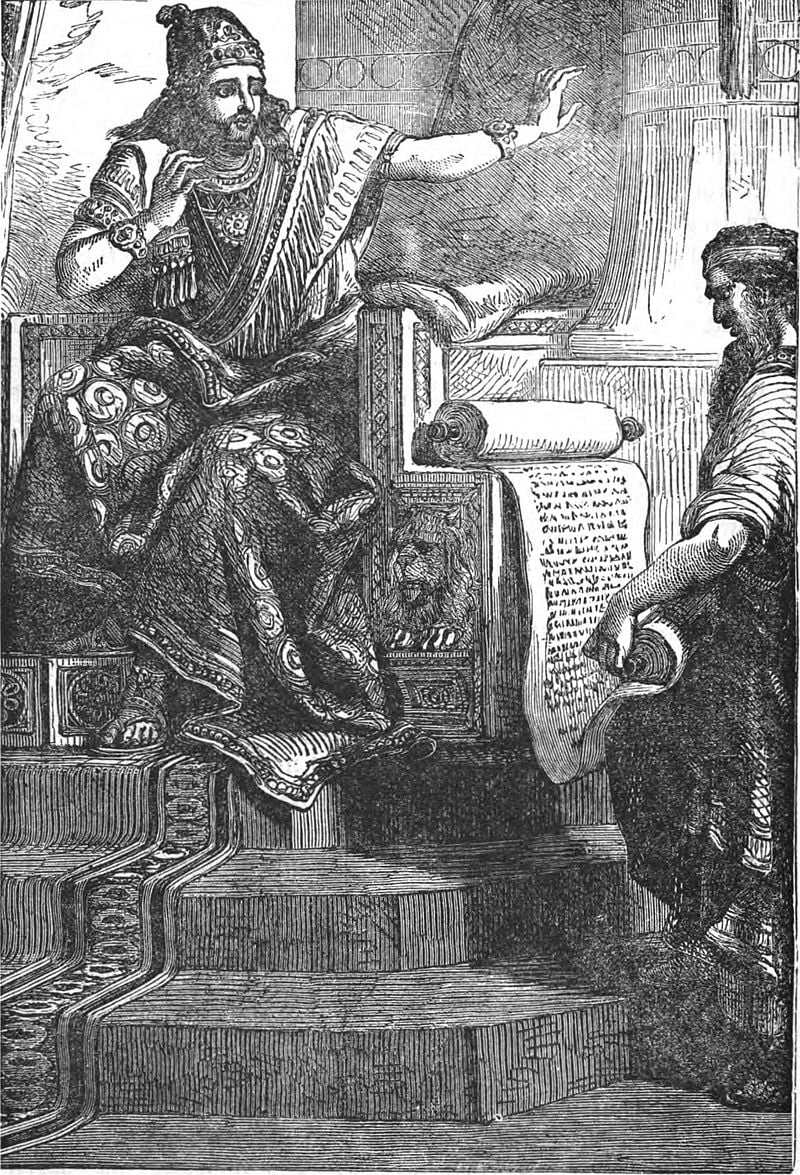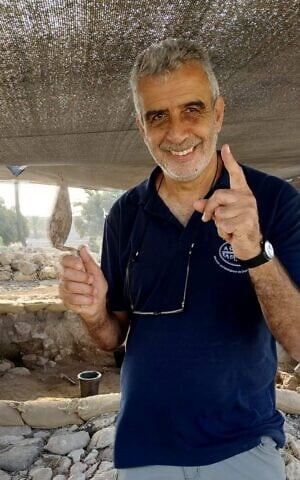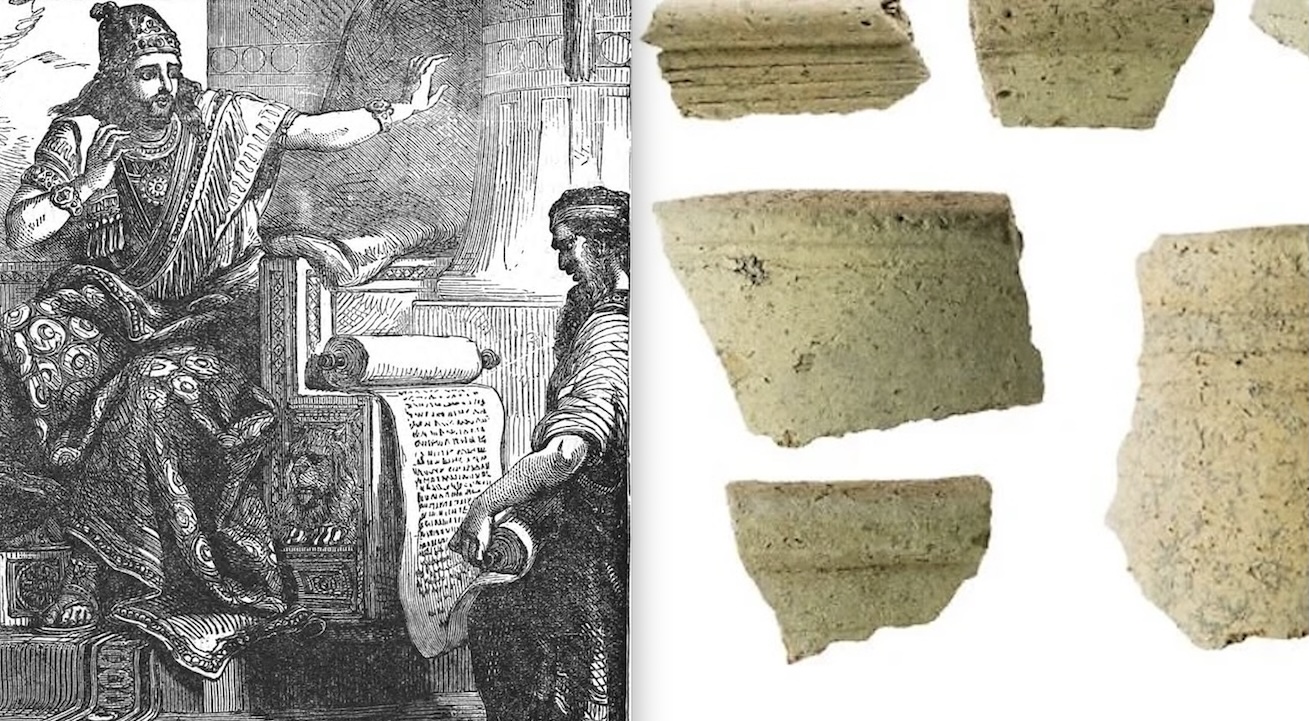For the first time, a team of Israeli archaeologists has uncovered ancient artifacts at northern Israel’s “Armageddon” site that might offer proof of an epic battle documented in the books of Kings II and Chronicles between a king of Judah and an Egyptian pharaoh.
Two academic papers published earlier this year explained how an unprecedented amount of 7th-century BCE Egyptian pottery was found in recent excavations at Megiddo, suggesting that Egyptian soldiers were indeed in the right biblical place at what could be the right biblical period.
“Megiddo is the only site in Israel and the neighboring countries mentioned in the Bible and in all great records of the Ancient Near East,” said Prof. Israel Finkelstein, head of the School of Archaeology and Maritime Cultures at the University of Haifa and long-time director of the Megiddo Expedition.

The Book of 2 Chronicles in chapters 34-35 and 2 Kings in chapters 22-23 narrate the vicissitudes of the 16th King of Judah, Josiah. As he rose to the throne, he was described as a God-fearing leader who brought the people of Israel back to a righteous path after centuries of idol-worshipping and sinful behaviors. Yet, his efforts did not placate God’s wrath against the people. As Egyptian Pharaoh Necho marched against the Assyrians, Josiah confronted him at Megiddo, and Necho killed him (2 Chronicles 35:20-22; 2 Kings 23:29). The Assyrians, one of several biblical foes of the people of Israel, were responsible for destroying the kingdom of Israel in the northern part of the land (where Megiddo is located) in the 8th century CE, a century before the Josiah-Necho battle.
“It is important to note that the re-establishment of the site as an Egyptian stronghold in the late 7th century BCE had long been suspected, mostly based on a biblical verse in the Book of Kings, which described Josiah’s execution at Megiddo by Pharaoh Necho,” said Dr. Assaf Kleiman of Ben Gurion University, a senior member of the Megiddo Expedition staff who led the studies published in Egypt and the Levant and the Scandinavian Journal of the Old Testament.
Alongside the massive amount of Egyptian pottery, the excavation also uncovered a significant quantity of vessels from eastern Greece that, based on typological parallels with well-dated contexts in other archaeological sites, must have arrived at Megiddo between 630 and 610 BCE (the Josiah-Necho battle is said to have happened in 609 BCE).

Finkelstein and Kleiman said these findings might hint at the presence of Greek mercenaries, who would have fought alongside the Egyptians against Josiah.
“We know of such mercenaries in the service of Egypt of that time from both Greek and Assyrian textual sources,” said Finkelstein. These Greek mercenaries may also have biblical ties.
“There are several clues in the Bible to the participation of Lydians from western Anatolia in the killing of Josiah. One of them is the story of Gog; some scholars think that Gog refers to Gyges, the king of Lydia who, according to the Assyrians, sent mercenaries to serve in the Egyptian army in the 7th century BCE,” said Finkelstein.

In the Hebrew Bible, the name Gog is mentioned in two books. In Ezekiel (chapters 38-39), Gog is a chief prince in the land of Magog, an enemy of Israel who will eventually be destroyed by God. In Chronicles 5:4, however, Gog is a descendant of the prophet Joel. In the New Testament, Gog and Magog are described as allies of Satan in the battle against God at the end of times (Revelations 20:7-9).
“The Book of Revelations in the New Testament refers to an eschatological battle between the forces of God and the forces of evil at Armageddon — a corruption in Greek of Har Megiddo — the Mound/hill of Megiddo,” Finkelstein noted. “Perhaps the theological idea behind it is that a savior from the lineage of David will return in the place where the last and most righteous Davidic King [Josiah] died.”
A long history of Megiddo excavations
“Megiddo has been excavated by four expeditions, starting in the early 20th century,” Finkelstein said. “Past excavations did not have access to modern methods and techniques and hence many of the results have been contested.”
The long history of destructive excavations — often completed with what are now considered primitive methods — makes the new finds even more exciting.
“Finding undisturbed remains of the Assyrian period in Megiddo had always been a passion of mine since it was widely believed that these remains were completely removed by the expedition that worked at the site in the early 20th century,” said Kleiman.

(via Times of Israel – Courtesy: The Megiddo Expedition)
“In 2016, we were finally able to locate an area suitable for investigating this fascinating period, very close to the administrative quarter of the site,” Kleiman told The Times of Israel via email. “In the last two years, I processed the findings in my lab at Ben-Gurion University of the Negev.”
The excavations in what archaeologists defined as “Area X” unearthed the remains of a building from the 7th century CE when the battle between Josiah and Necho would have occurred.
The structure featured several rooms and an open court and presented a rich assemblage of pottery.
The “Greater Israel” Scheme and its Global Power Play: a Delusional Recipe for Armageddon
“Pottery is the most abundant find unearthed in archaeological excavations,” said Kleiman. “It provides us with numerous insights into the life of ancient societies, for example, their cooking practices, trade relations, and, in very specific cases, group identities. In our recent excavation, we exposed what seems to be a domestic structure dating from the late 7th century BCE with both locally produced and imported ceramic vessels.”
The local pottery included fragments of vessels that, based on their typology, could be identified as Assyrian, as well as a piece that belonged to a Judahic cooking pot (based on typology and analysis of the origin of the clay used, which came from Moza near Jerusalem).
An army marches on its stomach
In addition to the potential Assyrian remains, the researchers also found over 100 pieces of Egyptian pottery.
“Since Egyptian pottery from the Late Iron Age was never encountered before at Megiddo, at the beginning of our research, we were a bit puzzled by the high quantities of crude vessels in the field,” said Kleiman. “However, due to their distinct morphology and the use of straw in the production process of these pots, we suspected an Egyptian origin. Our suspicion was confirmed by petrographic analysis, a method used to locate the production place of ancient artifacts.”
According to the researchers, the exposure of such significant quantities of Egyptian pottery, including vessels used for serving, cooking and storage, has never previously been documented throughout the entire Levant. In addition, the abundance of unadorned and poorly fired vessels suggests that the artifacts did not reach the city for sale at markets.
“Due to the abundant evidence of these vessels in the excavated structure, and as it is unlikely that the local population suddenly decided to import crude vessels from Egypt, we assumed that the simplest solution is that we are dealing with foreign groups, maybe indeed part of an Egyptian garrison that took over Megiddo following the retreat of the Assyrians from the Levant,” Kleiman said.
By Rossella Tercatin – original published by Times of Israel
Rossella Tercatin is The Times of Israel’s archaeology and religions reporter
RELATED TOPICS





Sounds like the archaeologists are clutching at straws to beef up their finds. Usually on battle sites there is evidence such as broken weapons, broken buildings and broken people. Broken pottery doesn’t quite make the grade.
We are talking about battles that took place 4-5 thousand years ago… It is useless to make assumptions to the contrary, let’s take what little certainty there is. Remembering the Gospel of Judeo-Christian Culture and the metaphor of the speck in the eye…
Personally I don’t assume there is any certainty. The more I read about history the more I think most of it is fiction, or at very best misleading.